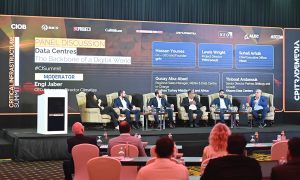Solving the Smart City Puzzle
Andrew Bevan, Parsons’ Smart Mobility Director, says transparency and the sharing of data open a whole new world of possibilities for smart cities.

Approved Content
![]()
Governments and private entities throughout the Middle East Africa region are increasingly enthusiastic about collaborating to use the data they gather. Authorities understand that they will have greater control over their infrastructure — and the use of their infrastructure — if they can aggregate the right data to create actionable information.
However, many disparate platforms on the market provide siloed solutions, tailored to specific use cases or particular industry applications, where a true smart-city solution would have the ability to gather and use data from a multitude of sources and would not be restricted by traditional industry verticals, or siloes, enabling new use cases and efficiencies by sharing data from a variety of sources.
The definition of a smart city remains indistinct. As a result, there are countless examples where the smart-city vision has been broken down into discrete components. In Amsterdam, the components are known as ‘’themes.’’ In Barcelona, they’re referred to as ‘’axes.’’ In Singapore, they’re also known as ‘’initiatives’’ and, in Dubai, as ‘’pillars.”
Deconstructing the complex vision of a smart city into manageable components makes the concept more comprehensible and tangible to allow the development of solutions for specific industry verticals. This is more attractive for industries, as they can directly address the needs of their clients as they fit within their portfolio and sphere of influence.
The approach of breaking down the smart-city vision into manageable components is similar to the way a large multidisciplinary infrastructure project would be delivered: by cascading requirements to each participating party (such as civil, mechanical, electrical, and systems) to deliver its part of the infrastructure puzzle to achieve the overall vision.
This can be considered a natural evolutionary process that any technology-driven project or initiative would go through to lay the foundations upon which to build the more complex integrated functionality and capabilities. The challenge moving forward will be to traverse these verticals to provide more holistic and universal solutions not constrained by these verticals.
A prime example of this type of application is mobility-as-a-service applications, which combine travel data and user preferences gathered from a broad range of travel modes (train, bicycles, cars, taxis buses, pedestrians), which can be owned and operated by different entities, to provide a seamless travel experience tailored to customers’ needs.
With the right governance, the authority has greater control over mode usage and the ability to influence the mode of transport used through ticket prices and bundled travel packages. Users are presented with a single online platform where they can purchase a ticket that spans multiple modes of transport to satisfy their specific preferences, whether the preference is to be cost-effective, fast, provide the ability to work, provide the ability to sleep, or provide a route to a favorite coffee shop. This sharing of data has enabled a new era of mobility.
This is an exciting time in the evolution of cities, one that will require greater levels of trust, openness, and fair governance. As well-thought-through applications of technology are starting to promote a true information exchange across previously segregated city divides, now is the time we need to rethink the breakdown of services, use cases, and the exchange of data between industry verticals to deliver the overall smart-city visions. We must look past the delivery of a collection of technology-driven solutions implemented within traditional industry siloes and promote holistic cross-vertical solutions that will enable a city to be branded as truly smart.
 Because value lies in gathering data from within as well as across industry segments, evolution must proceed to enable the achievement of a complete smart-city vision.
Because value lies in gathering data from within as well as across industry segments, evolution must proceed to enable the achievement of a complete smart-city vision.
This article was authored by Andrew Bevan, Smart Mobility Director, Parsons























